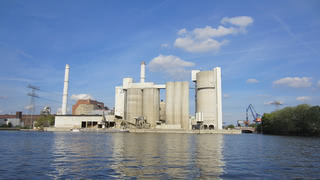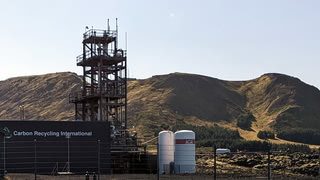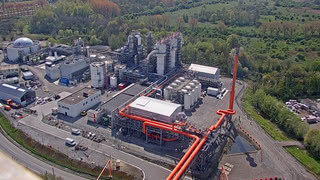EU Innovation Fund: Oxyfuel CCS, E-Methanol, and more
The EU Innovation Fund is one of the most important funding instruments for large-scale and industrial decarbonization projects. We look at the latest funding round: Multiple oxyfuel CCS projects for cement production, lots of e-methanol – and not much electrification.

The European Commission recently published a list of 41 large-scale decarbonization projects that will get financial support through the latest funding round of the EU Innovation Fund.
The EU Innovation Fund is a support program for decarbonization technologies funded with money from the sale of emission certificates via the EU Emission Trading System (ETS). It is one of the most important decarbonization funding programs worldwide. Therefore, looking at the projects in the Innovation Fund provides a peek into trends in decarbonization technology.
Cement with Oxyfuel CCS
Several projects target carbon capture and storage (CCS) in cement production. As explained in a previous newsletter issue, there are various paths toward carbon capture for cement plants, and a combination of electrification and CCS could provide a particularly attractive option. However, none of the current Innovation Fund round's projects use that path.
What appears to be the current trend in the cement industry is to go for CCS with Oxyfuel technology, with four projects supported by the Innovation Fund going that route. Oxyfuel CCS means that fossil fuels are combusted in pure oxygen instead of air, avoiding the need to separate nitrogen from carbon dioxide later.
To probably nobody's surprise, many of the projects in the Innovation Fund involve hydrogen – both its use and its production. The production of e-methanol from hydrogen and carbon dioxide also appears to be gaining traction. Four projects supported by the Innovation Fund plan to do this.
The reason for the increased interest in green methanol is the shipping industry. Green methanol is one of the options considered by many industry players as a future clean fuel. Container shipping giant Mæersk has ordered several ships with engines capable of running on methanol, and several other industry players have since followed.
The production of e-methanol and other synthetic hydrocarbons raises an interesting issue: Where does the CO₂ come from? Sourcing CO₂ from existing, fossil-based industrial facilities can be seen as problematic, as it is ultimately incompatible with a climate-neutral future.
One project called IRIS illustrates this particularly well: It sources its CO₂ from steam methane reforming, aka the production of grey hydrogen from fossil gas. While the methanol is made from green hydrogen, the project relies on the fact that grey hydrogen is produced nearby to supply the CO₂.
Graphite from Trees
Some of the more specialized projects deserve to be mentioned here.
The paper producer Stora Enso produces graphite from lignin in a project called Lignode One. Lignin is a by-product of the pulp and paper industry.
Graphite is a form of highly pure carbon, and it is used in multiple industrial applications. Today, it is usually made from petroleum coke or other fossil sources. The most notable use case is battery production. But pure carbon is also used in industrial applications like electric arc furnaces in steelmaking and in aluminium smelters where it is hard to replace. A source based on a by-product of biological origin could provide an interesting path to decarbonize residual emissions in some of these industries.
A project in Czechia involves a hybrid glass melting furnace where the bulk of the energy is provided by electricity. A similar project by the European Container Glass Federation (FEVE) had been rejected in a previous round of the EU Innovation Fund. That project was eventually continued by the glass company Ardagh with funding from a support program by the German government.
Lack of electrification projects shows a problematic imbalance
Notably, only a small number of the projects supported involve the electrification of industrial processes. Significant applications are missing: No large-scale heat pumps, no electric steam crackers, and, as mentioned, no electrified cement kilns.
Comparing this to the number of hydrogen and CCS projects, it appears there is a problematic imbalance. While hydrogen and carbon capture are undoubtedly crucial for some industrial applications, direct electrification is plausibly a more important decarbonization lever overall.
Author: Hanno Böck
Brief
-
The ferry operator Stena Line was one of the first companies to operate a ship with methanol fuel. Stena Line has commissioned ship engine maker Wärtsilä with further conversions of ships to methanol-capable engines. I covered it for Fathom World.
-
Brimstone Energy, a company developing an entirely new cement production method based on calcium silicates, just received a third-party certification that its cement provides the same chemical and structural properties as conventional Portland cement.
-
A scientific paper published in Nature Communications looks at climate-neutral aviation through synthetic jet fuels and DACCS. While these technologies can enable climate-neutral aviation, the authors emphasize demand reduction measures. Quoting the author's conclusion: "Thus, from a physical standpoint, reducing air-traffic demand is a good short- to mid-term solution. It drastically reduces the scale of the environmental and economic effort needed to limit the impact of aviation on the climate."



